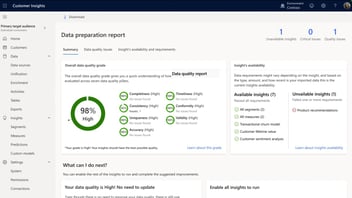Is your university software ready for Generation C?
Millennials are so last year. There’s a new generation hitting the social scene – Generation C. However, quite unlike most demographic cohorts, this one does not fall into a particular age demographic. Instead, it’s a term used to describe a new generation of people who have one thing in common: they’re digital natives and exceptionally tech-savvy. Furthermore, anybody can join the Generation C community, as long as they are digitally connected and a follower of Web 2.0.
Why is this important? If you’re working in higher education, your marketing strategy over the past few years has probably been focused around attracting the attention of millennials, utilising CRM technology to engage with potential students and both attract new faces and reduce drop-out rates. However, while traditional methods may have been successful, to reach the growing Generation C crowd, you are going to have to significantly accelerate these efforts. Social listening and digital communications are the aim of the game but, surprisingly, not all technology systems can facilitate such a pace of change.
A high percentage of higher education institutions are operating proprietary software which, while being the largest, most state-of-the-art solution on the market at the point it was installed, has remained stagnant ever since, rather than expanding and evolving to suit the growing needs of education professionals.
Large CRM systems today often rely heavily on licensed software that incorporates a large element of managed Intellectual Property (IP). What this means for universities is that they are tied into a single software provider, placing restrictions on what they can and cannot do with their own systems. These software licenses typically restrict the licensee’s right to copy, redistribute, or modify the software and normally do not grant access to the software’s source code. These restrictions help to protect the developer’s investment in the software by preventing third parties from expropriating the software’s economic value without the developer’s authorisation.
Of course, it also means that when a new generation of potential students begins to search for a new educational path, several organisations lack the software scalability and flexibility they need to be able to evolve their CRM and marketing strategy, potentially missing out on tomorrow’s learners. Unless, of course, they are prepared to pay the software licenser exorbitant sums of money and endure long delays to the system while additional functionality is added.
The answer for some is to install their own supplementary software packages and applications, creating a culture of shadow IT. Such a move only further eats into an educational institution’s IP, creating highly complex, inflexible systems that are as difficult to evolve as they are to control. It also undermines any CRM strategy that you may have tried to implement within the business, as different individuals create their own rogue processes.
Once you become entangled in the shadow IT web it can be very difficult to get out and even more challenging to use your CRM system as an effective marketing tool for talent attraction and retention. So, what can you do?
Rather than become distracted by the most widely marketed, large CRM system, it’s important to think about building a more customised IT stack that helps you protect and retain your own IP. Smaller, configurable and more adaptive IT solutions often only use managed IP when it is a necessary part of a business process within the wider systems network. Microsoft applications are ideal for this.
Microsoft technologies are designed with agility in mind, making it possible to configure IT networks to take into account both developments from the vendor and third-party applications, benefiting the business processes of a university or college. This makes it possible to build an adaptable and flexible IT ecosystem that evolves with both your needs and the needs of changing social demographics. Such a system can also help IT teams become more responsive to the needs of the organisation, ensuring they maintain governance over systems and ensure greater IT security.
To find out more about how Microsoft technologies can help you reach out to Generation C – or even Generations D and E (or whatever they think of next), get in touch with us today.
At Crimson, we can help you accelerate your team’s understanding of the potential of Microsoft Dynamics 365 CRM in your higher education institute, through our tailored Assess2Progress Workshop. Tailored to marketing, student liaison and IT specialists, the workshop gives higher education institutes an opportunity to work with our experts and map their priorities against the features of Dynamics CRM and Crimson’s own university accelerators. To find out more call our team on 01675 466 477.


